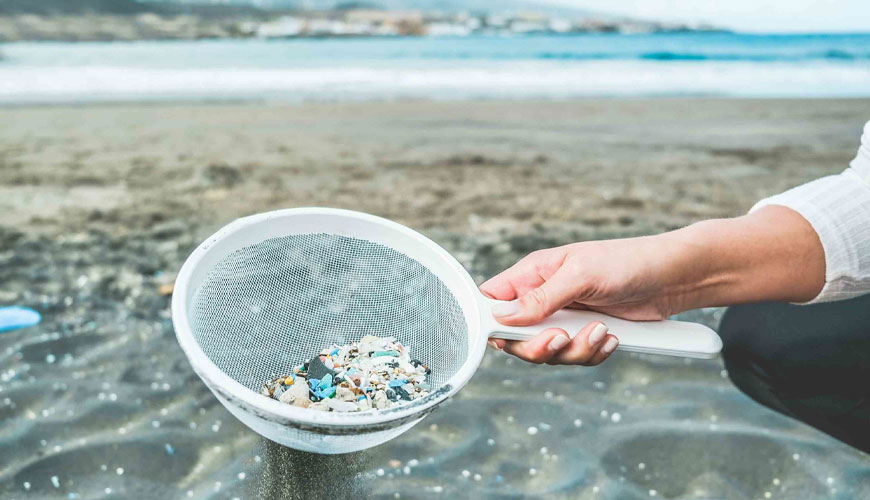

Microplastics are small pieces of plastic less than five millimeters short that harm life in the ocean and aquatic life. Plastics are the most common type of marine litter found in lakes, seas and oceans. Plastic debris can come in all shapes and sizes, but those shorter than five millimeters in length are called microplastics.

Not much is known yet about microplastics and their effects. In this regard, standardized field methods are developed and various tests are carried out for the collection of microplastic samples.
Microplastics come from a variety of sources, including larger plastic debris that gradually decomposes into smaller pieces. Microbeads, a type of microplastic, are very small pieces of manufactured polyethylene plastic added to health and beauty products such as some cleansers and toothpastes. These tiny particles easily pass through water filtration systems, reach the seas and oceans and pose a potential threat to aquatic life.
Microbeads first appeared in personal care products about fifty years ago, according to the United Nations Environment Program, and plastics have increasingly replaced natural ingredients. First, in 2015, a microbead-free water law was passed in the USA, which bans plastic microbeads in cosmetics and personal care products.
Microplastics are derived from petrochemicals extracted from petroleum products. Some of these particles are toxic to humans, carry carcinogenic or mutagenic chemicals, and potentially cause cancer and DNA damage. People spend 90 percent of their time indoors, so the biggest risk of exposure to microplastics is indoors. These microplastics settle in dust almost everywhere. Having hard floors, using more natural fibers in clothing, furniture, and household items, and cleaning at least weekly can reduce exposure to microplastics. According to researches, nearly 40 percent of the accumulated dust particles are microplastics. Every day, 20-6200 microfiber dust is accumulated per square meter.
Microplastics can carry a number of contaminants such as trace metals and some potentially harmful organic chemicals.
Among the numerous test, measurement, analysis and evaluation studies it provides for businesses in various sectors, our organization also provides analysis services that do not contain microplastics, with its trained and expert staff and advanced technological equipment.
To get an appointment, to get more detailed information or to request an evaluation, you can ask us to fill in our form and reach you.